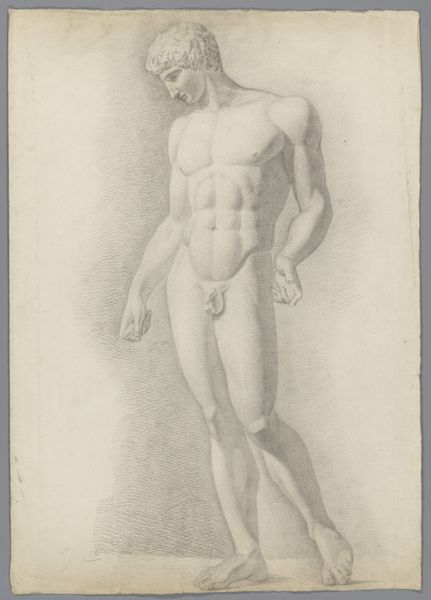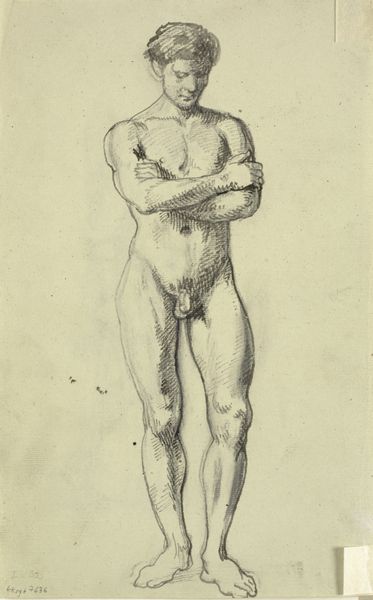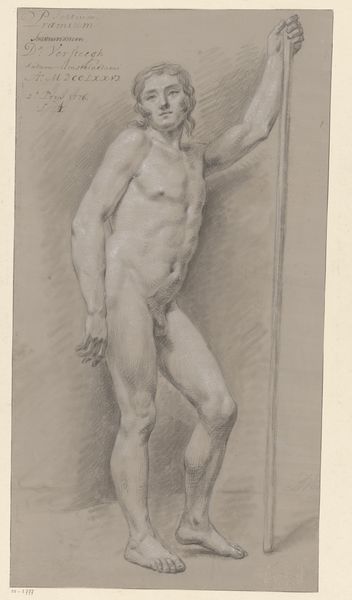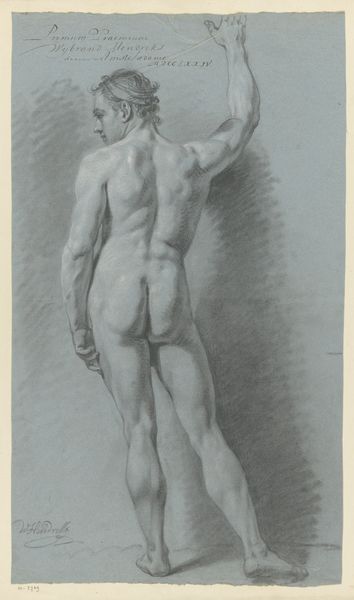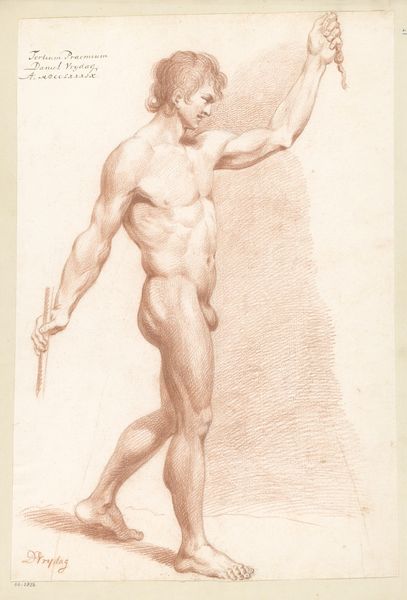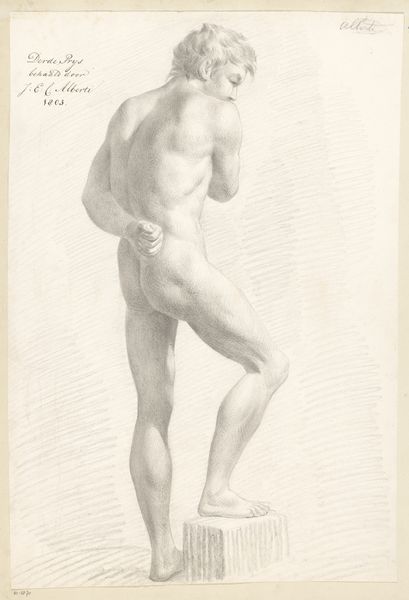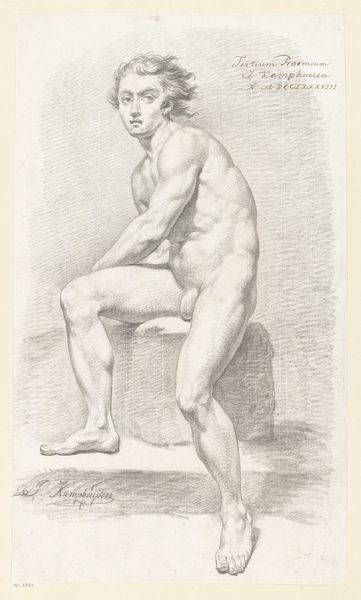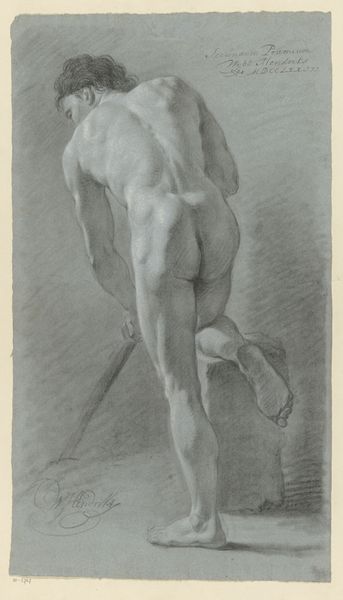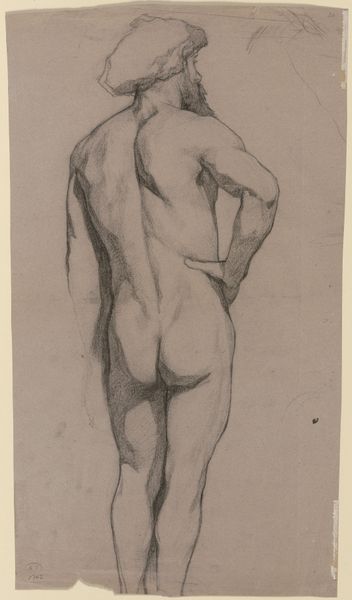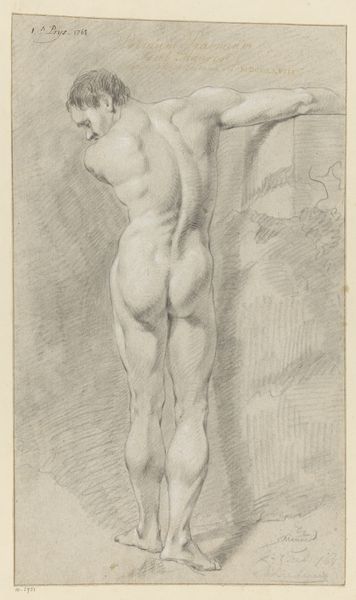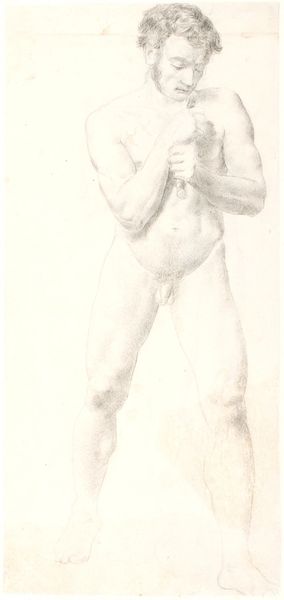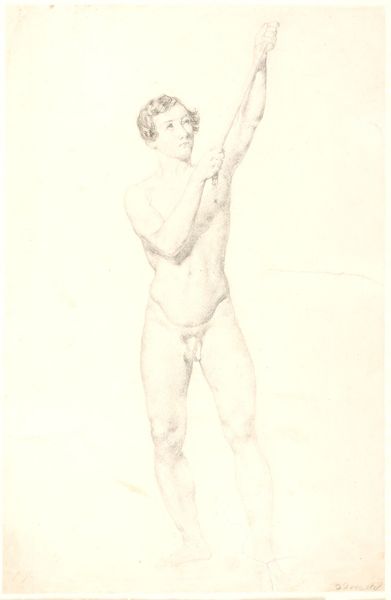
drawing, pencil
#
portrait
#
drawing
#
figuration
#
form
#
romanticism
#
pencil
#
line
#
history-painting
#
academic-art
#
nude
#
realism
Dimensions: 383 mm (height) x 214 mm (width) (bladmaal)
Curator: Let's turn our attention to "Standing Male Academy Model," a pencil drawing created by Christen Købke in 1832. It currently resides in the collection of the SMK, the National Gallery of Denmark. Editor: My immediate impression is one of restrained energy. The cross-hatching creates a subtle tension across the figure's body, making it seem as if he's barely containing an inner vitality. Curator: I agree, and it’s crucial to understand the role of the "academy model" within the artistic practices of the time. Works like this were central to artistic training, acting as a mode through which artists develop anatomical skills and ideas about ideal forms, all through the lens of direct observation of the male body as a model for "history painting". The emphasis wasn't necessarily on portraying an individual, but rather on mastering form and technique within an approved set of standards of labor. Editor: Absolutely. But Købke's meticulous line work also elevates it beyond mere exercise. Observe how the quality of the line modulates to suggest not only form but also the play of light across the skin. Note also the positioning: there’s almost a classical contrapposto happening, that imbues it with a gentle movement. It suggests a consciousness of art historical precedent, which must've had impact for an aspiring young romanticist in Copenhagen. Curator: Precisely, the social context informs his interpretation and process. The very act of repeatedly drawing this form, how many iterations were made for it, speaks to the academy’s desire to standardize artistic output. I wonder what the socioeconomic background of this figure was—did he have any rights? And was he well compensated for it? These bodies provided necessary service. The work serves, in many ways, as a document of artistic production of the period. Editor: And, of course, we should consider the gaze. The artist’s intent is less one of rendering specific details—note the fairly generic facial features—and is more geared towards creating idealized formal structure within which an artistic exercise becomes an aesthetic experience. It’s about elevating and abstracting beyond mere documentation. It may reveal the hidden assumptions behind traditional conventions if you allow a more direct engagement. Curator: Looking closely, I’m also thinking about what that pencil means, its material constraints, its price in relation to the status of laborers making a modest salary. Those details all matter here. Editor: Agreed. The drawing's deceptive simplicity belies the complex formal considerations at play. The very tension in those carefully laid lines speaks to both its purpose as study and, perhaps inadvertently, of its success as a meditation on human form and historical art production, no?
Comments
No comments
Be the first to comment and join the conversation on the ultimate creative platform.
